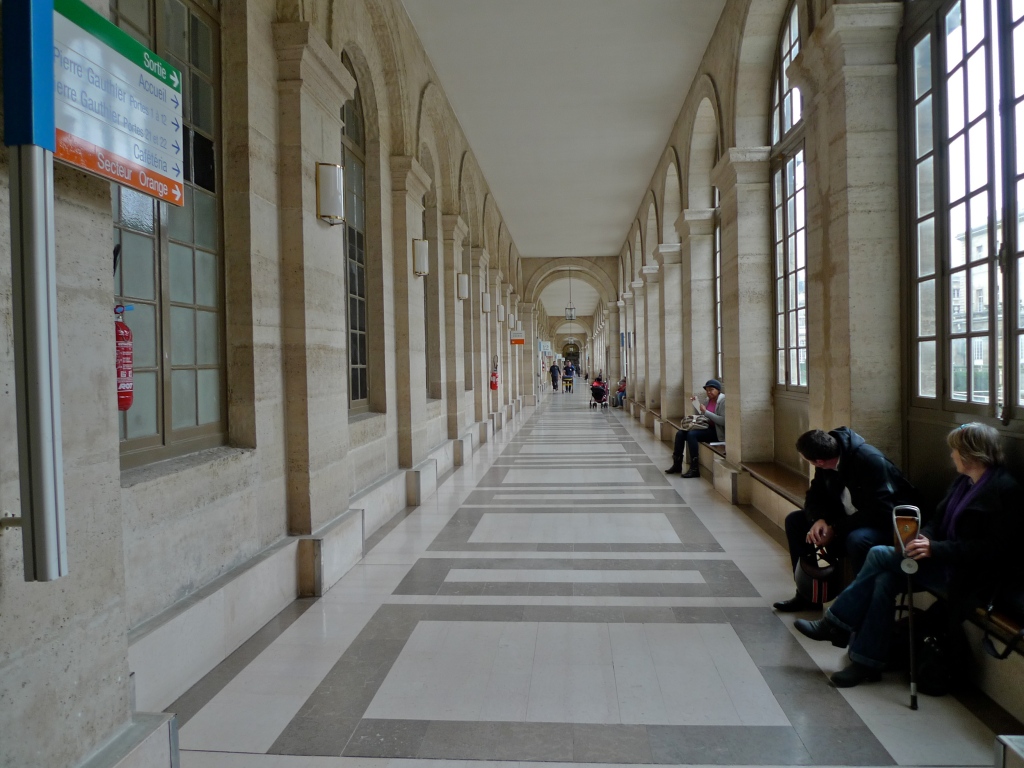Hôpital Lariboisière – A Soundwalk
I ALWAYS THINK it’s better to visit a hospital out of curiosity rather than out of necessity. The other day it was curiosity that led me to the Hôpital Lariboisière in the 10th arrondissement a short step away from the Gare du Nord.
The Hôpital Lariboisière was born out of the cholera epidemic that hit Paris in 1832. The Hôtel Dieu, the oldest hospital in Paris, took the brunt of the epidemic and it is said that by the end of March 1832 every admission to the Hôtel Dieu was for cholera and practically no one was discharged. Almost 20,000 souls died from the six-month epidemic.
L’Hôtel Dieu during the cholera epidemic 1832 – Painting by Alfred Johannot
Devastating though it was, the epidemic did produce some positive results. In the 19th century curing cholera was like clutching at straws so attention turned towards prevention rather than cure. Major steps were taken to improve the city’s hygiene and by the time Baron Haussmann began rebuilding Paris in 1853 the hygienist movement had become the major force in urban planning. Slums were demolished, streets widened, the sewage system improved and a new hospital was built to serve the inhabitants on the Right Bank – the Hôpital Lariboisière.
The French architect, Martin-Pierre Gauthier, designed the new hospital based on the hygienist principles of providing plenty of light and air, a free flow of water and pavilions separated by galleries to prevent cross infection. His design comprised six buildings arranged around a central courtyard connected by colonnaded walkways.
A bequest from Eliza Roy Comtesse de Lariboisière financed the building of the hospital. The Comtesse had no heirs and so she bequeathed her fortune to the City of Paris to create ‘un hospice pour les malades qui portera mon nom Hospice Lariboisière’. The Comtesse died on 27th December 1851 and on 29th July 1853 an Imperial decree confirmed that the hospital was to be named Hôpital Lariboisière, the name by which it’s still known today. The hospital was opened in 1854.
The tomb of the Comtesse de Lariboisière, designed by the Italian born French sculptor, Carlo Marochetti, rests in the hospital chapel.
Today, behind it’s 19th century façade, the Hôpital Lariboisière is a busy, modern hospital with around 1,000 beds. Together with two other hospitals very close by, Hôpital Saint-Louis and Hôpital Fernand Widal, the Hôpital Lariboisière is part of the Groupe Hospitalier Universitaire Saint-Louis, Lariboisière, Fernand Widal, which together offer a comprehensive range of medical services.
I went to explore the Hôpital Lariboisière. I wandered through the gardens outside and along the quadrangle of long corridors inside on the ground floor, the arteries that lead to the ars medicina beyond.
Here are some of the sights and sounds I discovered.
Hôpital Lariboisière – A Soundwalk:
If you enjoyed this post you might like these as well:
The Hôtel Dieu – The Oldest Hospital in Paris
The Hôpital Salpêtrière … A personal view narrated by Adam from Invisible Paris























